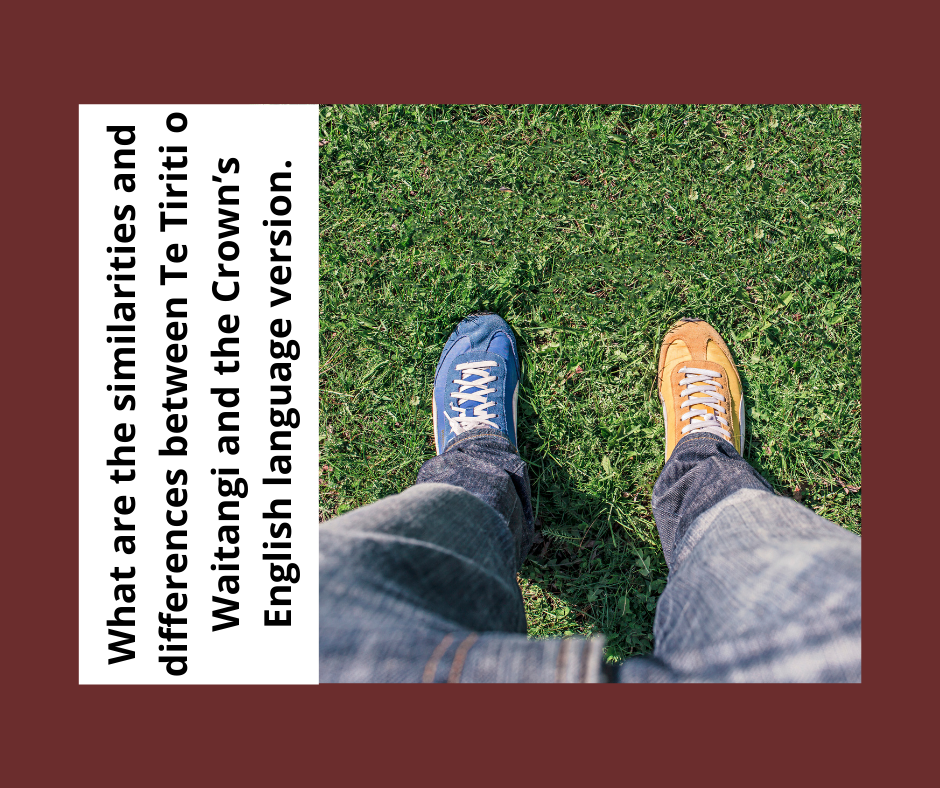Note: We use ‘the Treaty of Waitangi’ and ‘te Tiriti o Waitangi’ interchangeably to signify the reo Maori text. We call the English language document ‘the Crown’s English language version’ or similar.
The Treaty consists of a Preamble and four Articles; the fourth Article was added at Waitangi on 6 February 1840, although it does not appear in the Crown’s English-language version. The significant differences between Te Tiriti and the Crown’s English-language version are most crucially evident in Articles 1 and 2 but are to be found in all parts of the documents.
Preamble
The Preamble is an introductory statement, expressing the Queen’s good will to the Rangatira and hapū of New Zealand, asking them to allow a place for her Governor, and committing to a peaceful future together. It recognises that other people will come.
Article I
Te Tiriti o Waitangi says that the Rangatira and hapū agree to the Queen’s Governor exercising kāwanatanga (a transliteration of the word governorship) within the lands granted to non-Māori. Clearly this did not mean that the Governor was to have authority over Māori but rather only over the British subjects and others “living here in a state of lawlessness”.
The Crown’s English version says that the Rangatira would cede their sovereignty to the Queen, meaning the Crown would have complete power and authority over everything and everybody throughout the land.
Article II
Te Tiriti o Waitangi says that the Crown recognises and will uphold the paramount authority (tino rangatiratanga) of the many Rangatira of the many hapū in their lands, villages and all that is precious to them (taonga). This directly contradicts the cession of sovereignty referred to in Article 1 of the Crown’s English version, which in Article II guarantees to Māori only “the full, exclusive and undisturbed possession of their lands and estates, forest, fisheries, and other properties” as long as they wish. Many of the cases brought to the Waitangi Tribunal have succeeded because it has been shown that, following the signing of the Treaty the Crown took actions that forced land and other taonga out of Māori hands. The word taonga in te Tiriti is not limited to property and possessions, as stated in the Crown’s English-language version; understood within the Māori cultural context, taonga are recognised as having inherent value and the word encompasses all things held precious: for example, language, culture, access to traditional food sources, people, yet-to-be born descendants, a clean environment and health.
Article II in the Crown’s English version allows the Crown priority over individuals in land dealings with hapū. In Te Tiriti o Waitangi, the Rangatira just allow the Crown to trade for the use of those pieces of land that hapū consent to allocate.
Article III
Article III in both texts accords to Māori the same rights as British people, that is, additional to the rights they already enjoy in their own society.
Article IV
At the first Treaty signing, William Colenso (Anglican) recorded a discussion on religious freedom between Bishop Pompallier (Catholic) and Captain Hobson. In answer to a direct question from Pompallier, Hobson and the Rangatira agreed to add the following statement which was read out in te reo Māori and written on the document before anyone had signed:
The Governor says the several faiths (beliefs) – of England, of the Wesleyans, of Rome, and also Māori custom and religion – shall all alike be protected by him. (The word ritenga is used here and refers to beliefs and practices of the spiritual relationship between humans and the rest of the natural world.)
The Crown’s English-language version does not include this Article.
In summary
Te Tiriti o Waitangi confirms Māori authority and sovereignty, guaranteeing to Māori the full control and authority in their lands, people, settlements and all that is of value to them, including their social, political and economic relationships and institutions. It allows a place for a Governor to exercise control over non-Māori within the lands allocated to them. The Treaty provides a framework for relationships and political organisation between Tangata Whenua and the Crown, to ensure peace and good order into the future.
Sources:
Treaty of Waitangi Questions & Answers, Network Waitangi 2018

